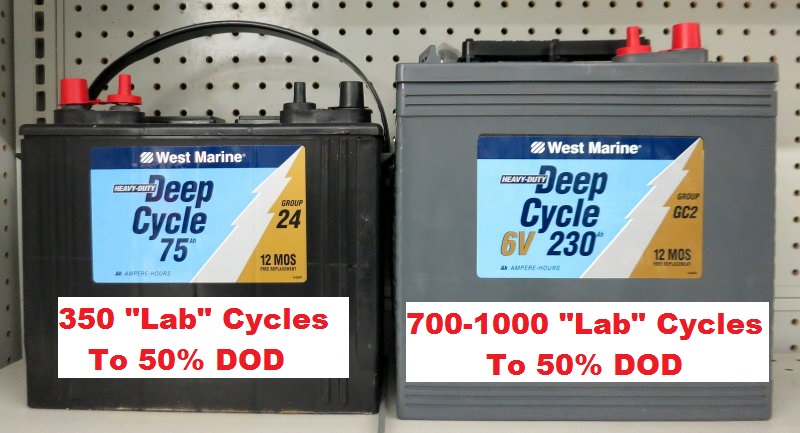Alloy
Well-known member
Back in 2016 I load tested two expensive 6V(red cases) 250Ah AGM batteries at 12A (20 hour rating).
The test was run over and and over and over and each time the results were the same.
Batteries were charged (using a temp sensor) @ 15.2V (mfg. recommended) bulk and 14.1 float
Resting voltage 12.82V.
12amp load is connected. Voltage dropped to 12.33V.
1 hour later the voltage was 12.32V
2 hours later the voltage was 12.25V
3 hours later the voltage was 12.16V
3 1/2 hours later the voltage was 12.09V and the 12A load was disconnected
4 1/2 hours later the resting voltage was 12.32V
The AGM batteries where returned to the dealer. The dealer tested the batteries and found nothing wrong.
I ended up going with FLA.
The test was run over and and over and over and each time the results were the same.
Batteries were charged (using a temp sensor) @ 15.2V (mfg. recommended) bulk and 14.1 float
Resting voltage 12.82V.
12amp load is connected. Voltage dropped to 12.33V.
1 hour later the voltage was 12.32V
2 hours later the voltage was 12.25V
3 hours later the voltage was 12.16V
3 1/2 hours later the voltage was 12.09V and the 12A load was disconnected
4 1/2 hours later the resting voltage was 12.32V
The AGM batteries where returned to the dealer. The dealer tested the batteries and found nothing wrong.
I ended up going with FLA.
Last edited:

